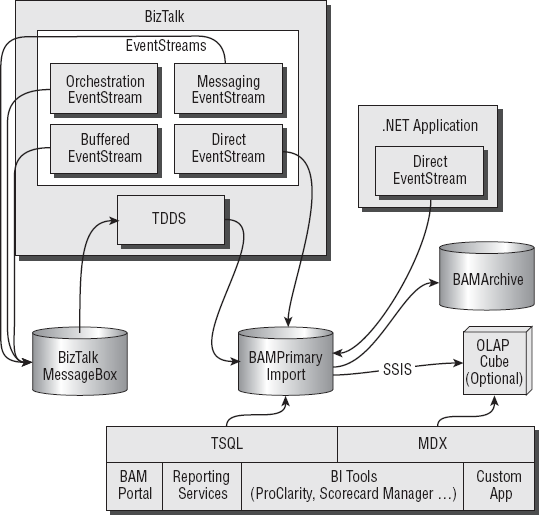6.2. BAM Fundamentals
This section discusses the fundamentals of BAM. We'll cover how you can model the data you want to collect, how it's stored under the covers, and, more importantly, how you can get data into the BAM infrastructure.
Figure 6-1 depicts a simplified view of the BAM architecture that you can refer to as you work through this chapter.
BAM provides a mechanism that can provide a view inside your business process; the business process can be implemented solely in BizTalk or perhaps partitioned between BizTalk, Web services, and so on.
The first step to enabling BAM on your solution is developing an observation model, effectively a wish list of information that you want to collect, and it is modeled using an Excel add-in.
The observation model first defines the activities that you want to use. These ultimately become SQL tables and will hold the activity items (data) that you want to collect. The granularity of your activities depends entirely on your solution; we'll demonstrate some examples later in this chapter.
Once you've defined an activity, you must then define the activity items to be held. These activity items are defined as either business milestones or business data items. Milestones are mapped directly to SQL Server DateTime columns, and data items map to either SQL Server varchar, int, or decimal columns.
Figure 6.1. Figure 6-1

Activity views can then ...
Get Professional BizTalk® Server 2006 now with the O’Reilly learning platform.
O’Reilly members experience books, live events, courses curated by job role, and more from O’Reilly and nearly 200 top publishers.

